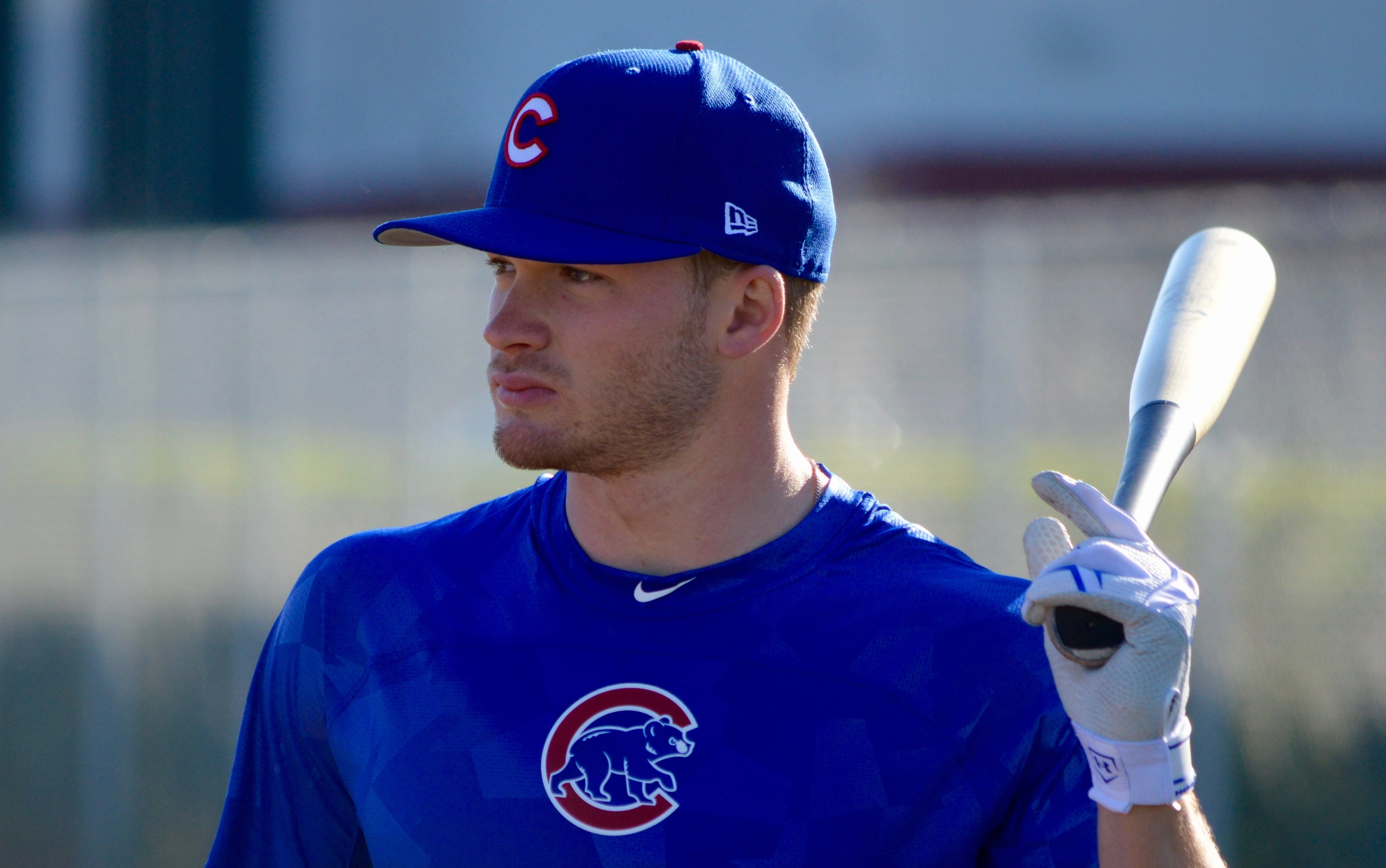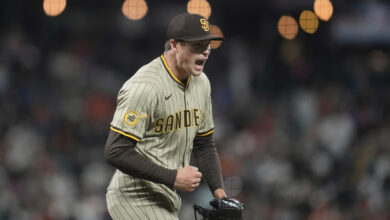
What’s Happening Now: Pitchers Have Adjusted to Ian Happ and the Results Are Ugly
This headline probably means little to those of you who didn’t grow up watching the Cubs on WGN in the days before lights, but Raj, Rerun, and Dwayne kept me company before and after summer afternoon games. So I found it only natural to leverage the title of that old TV show for a pun, particularly one that fits so well with what we’ve seen from Ian Happ over the last two-plus weeks.
What looked like an atta-boy promotion to provide a little depth in light of injuries quickly turned into a necessity, as Happ forced himself into the lineup and usurped playing time from Albert Almora Jr. in center. It’s very early, to be sure, but the Cubs’ top prospect has already given us contrasting results that show just how hard it is to succeed at the highest level and how things can change when the book on you gets out.
Just as quickly as he forced Joe Maddon to find room for him, Happ’s numbers have nosedived as NL pitchers have adjusted to him and afforded him the kind of treatment you’d expect for a big league hitter. Which is to say they have figured out what works against him and they’ve been leveraging the H-E-double-hockey-sticks out of it lately.
So I can be sure we’re all on the same page here, I will go ahead and acknowledge that even the entirety of his experience with the Cubs isn’t enough to tell us exactly who Happ is as a hitter. However, we can still see enough from the results — or, more accurately, what has begat them — to see how pitchers have adjusted to the rookie and what he’ll need to do to counteract the changes.
Consider the hot start that saw the switch-hitting, play-everywhere rookie slash .357/.455/.786 with a .505 wOBA and 217 wRC+, including a pair of home runs and a 15.2 percent walk rate. One of the most impressive of Happ’s first 33 plate appearances came against the Reds on May 16, and it wasn’t his solo shot. Stepping in with the bases loaded, Happ worked a full count and then walked to force in a run against Blake Wood.
Most young guys, and even some old guys, would have been up there swinging for the fences, especially with their team up three runs and with a homer already under their belt in the game. The patience he showed solidified in many minds that Happ had what it took to stick in The Show. He had another few days of solid performance after that, but things have fallen off since.
To better understand what has changed, we need to look at how the young hitter is being pitched. First up, take a look at this zone profile of Happ’s first 33 plate appearances.
Now take a look at the breakdown of pitches he was seeing and take note of how balanced all the ancillary offerings are. It’s as though opposing pitchers were probing for a weak spot that they could eventually exploit.
Given the advanced scouting and immediate access to film and results of various players, it doesn’t take long to figure out what works against a hitter. As such, Happ has struggled in his 25 most recent plate appearances since the league has adjusted to him. If, that is, you consider .091/.200/.091 with a .155 wOBA and a wRC+ of -12 struggling. Happ has also seen his walks cut nearly in half (8 percent) while his strikeouts have skyrocketed (52 percent).
What’s different? For that we turn again once again to the zone profile. Notice anything different?
No longer living in the middle and lower portions, pitchers are pounding the upper half of the zone with regularity. More so than just where they’re pitching him, we see a very clear separation in what pitchers are throwing to Happ.
Looks like a steady diet of fastballs, complemented by a healthy dose of cutters and a few sliders on the side. Despite a sample that is 13 pitches smaller than that above, Happ has seen more of all three of those pitches while sinkers, changeups, and curves have all but disappeared. The cutter in particular has more than doubled, from 11 to 25 percent of total pitches seen. As you might imagine, he’s seeing them up in the zone too.
Even if you don’t really know what you’re looking at, the differences in the heat maps make it clear that what Happ facing lately has changed dramatically from what he saw when he first came up. Below are illustrations of fastball locations, first through May 22 and then from May 23 to present.
The difference in cutter location is even more stark, as pitchers have lit up the top of the zone like the star on a Christmas tree. They know Happ can’t hit those pitches and that he’s also powerless to lay off them, so they’re going to keep going back to that well until he proves them wrong.
The question now becomes one of whether and when he can make the necessary counter-adjustments to find the middle ground. Ian Happ is not who we saw when he was first promoted and he’s not who we’re seeing now. He is, however, a capable MLB hitter who can play several different positions and either start or fill in admirably. As to whether he’s going to displace Almora or Javy Baez, however, that is still up for debate.
Happ’s got loads of talent, but I just don’t see him as an everyday player for this team long-term. His ceiling isn’t as high has Javy’s, his floor is lower than Almora’s, he doesn’t possess an elite glove, and the Cubs don’t necessarily need another jack-of-all-trades. What they need is to make trades — well, maybe “need” is strong, but it’s no secret that they’re looking to be active — and they’ll be dealing from depth to do it. We could even see something happening in the near future, too, as the Cubs have been big on jumping out in front of the market.
A few handfuls of plate appearances in May of his rookie season aren’t going to be deleterious to Happ’s value to either the Cubs or another team, but he will have to figure some things out if he’s going to be a contributor in a big way for any team.









